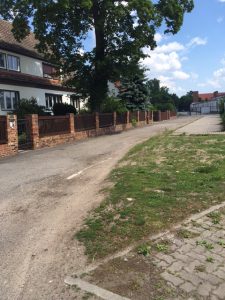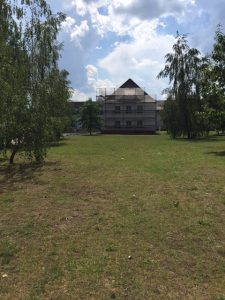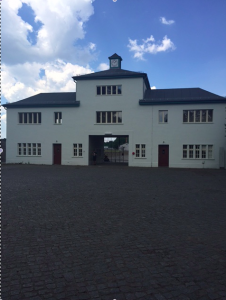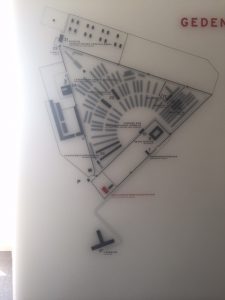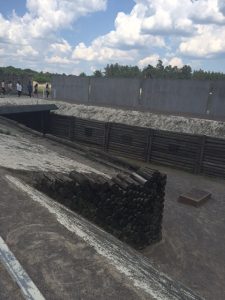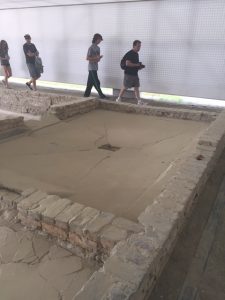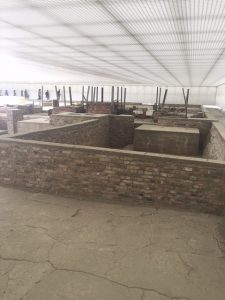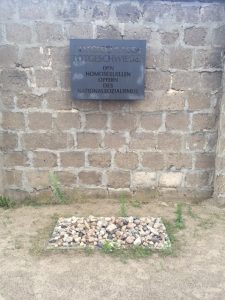By Nate Albrecht
10th June, 2016
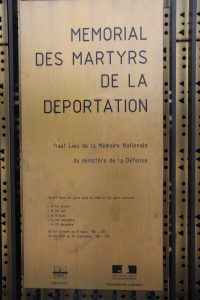
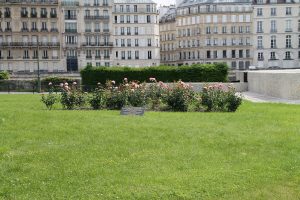
Today as we continue our adventures in Paris, we visited two memorials. The first is the memorial to the deported people of France in occupied France, and the second is the Memorial to the Shoah. Unfortunately, we were unable to go inside the Deportation Memorial because it has been flooded by Seine River. I can however tell you that we talked about the collaboration of the Vichy Regime in the deportation of thousands of men, women, and children (especially Jews) to concentration camps, many of whom would not survive. The Garden above the memorial is simple yet dissatisfying in acknowledging the complicity of the French people during this time. The Nazis did not ask for any Jews under age 18 to be deported; however, the French willingly sent what we now know to be about 13,000 children under age 18 to the concentration camps. This memorial spoke to the importance of remembering the complicity of many parts of Europe during World War II that allowed the Holocaust to progress to the extremes that it did. The memorial itself sits behind Notre Dame which is a popular tourist site. This placement (directly behind Notre Dame) is important as is the language in the lack of accountability of the French to claim responsibility for their own complicity in the actions that led to the deaths of millions of people as well as the scars collectively France still caries as a nation over their own contradiction in belief of a universal citizenship where all are treated equally (idealized in the motto “Death to the Republic, Long live the Universe”) and their own willingness to comply with Nazi demands.
This leads us into the Memorial to the Shoah, where I will start by explaining the term Shoah to those who may be unfamiliar with its meaning. Shoah is the Jewish word for Holocaust or martyr, it can also be a term used for a great catastrophe. Shoah also has a biblical meaning of Destruction. Shoah as Holocaust can also mean death by fire. I believe this is important to remember when thinking of the Holocaust because people should be responsible for understanding the language of the people who are experts on what happened to Jews in concentration camps – themselves. Jewish survivors themselves are the experts on this topic.
The memorial itself has the tightest security I have thus encountered in Paris which speaks to its importance to the memory of the French people. Set in the heart of the Marais, the memorial sits in the oldest and most beautiful part of Paris. Walking to the memorial, we passed buildings that were 500-700 years old.
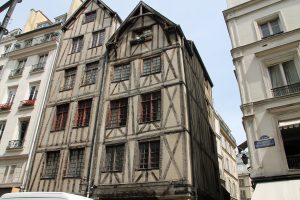
After entering you come into a courtyard with a circular memorial to the places the Jews were sent to be exterminated. As you walk down the steps from the courtyard to enter the museum and memorial, you find walls of names of those deported from 1942-45. There are walls 8-10 feet high by 20-40 feet long of name after name of Jewish person who was killed. After you enter the museum, you go down one flight of stairs and can see women who were resistance fighters and continuing forward you go down a few steps and you can see the memorial to the murdered Jews. The final resting place for the ashes of Jewish people in a black granite and marble room with a large black marble Star of David in the center above is glass circles in the shape of the Star of David as well, which provides a soft light over the marble memorial. As you approach, you can hear every footfall, every swish of the fabric of your pants, every intake and exhale of breath and you know you are in a sacred place to be revered. The room is quiet and reverence hangs in the air. You almost get the feeling that dust even wouldn’t dare to settle here. Because of the impossibility of identifying millions of peoples’ ashes, they were buried there in soil brought from Israel on February 24, 1957. I apologize for the deep descriptions, but I feel that photos of this place are inappropriate to the justice of the individuals who died under Nazi persecution, not that a photograph could ever do this place justice. Upstairs from the memorial on the 2nd through 4th floors are artifacts and information about victims of the
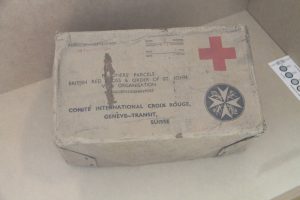
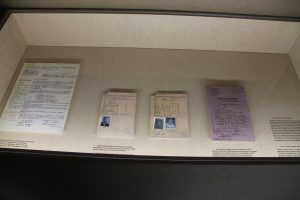
Holocaust. It was interesting to think about the people who survived the Holocaust and to know that not everyone received reparations and that many people were displaced and moved through displaced persons’ camps which in some cases were just as bad for these survivors as the concentration camps themselves. There unfortunately was not enough time to look at everything in the collection, but what I did see was fascinating. There was even a section on memorializing the Shoah as to prevent history from repeating itself. This was a horrific period of history and if we as a society and generation refuse to memorialize all parts and pieces of it, we are doomed to repeat it because history is doomed to repeat itself. In far too many places, the holocaust is a distant memory in a time long ago and a land far away, but that time was not so long ago and land was not so far away when one can stand on the ground where victims stood and take in the sights they saw and remember that these are people too.
Let us not be afraid of memory, let us revere it and celebrate what should be celebrated, cry over what must be cried about, and never forget the joy or tragedy of the past which can help us to inform the next generation about how to live. I was inspired today not only by memories of perseverance, memories of sadness, and memories of bravery and courage, and I would like to end on a note where I find great courage. As we walked by a particular house, we saw a plaque which was dedicated to a mother and her three sons. This mother had sons in the French resistance who were fighting against the German occupation as well as French compliance. As we know the Gestapo did not take too kindly to French Resistance members and found out who these men were and stopped by their house looking for them, where the gestapo found the mother of the young men whom they were looking for. The gestapo asked her where are your sons and she refused to tell them… even under torture she refused to tell them. The Gestapo killed her. In this action of love, I find bravery and courage to remind us all not only to not forget, but to stand tall for our beliefs and to be kind to one another even in the face of great danger or death. Reflecting on this day has been difficult and while the language to describe the events of the holocaust and the outcome – the death, and destruction – while I find myself thinking impossible or unbelievable, I know that those are not words I can use to describe the Holocaust. I find the word Shoah to be the most useful as well as horrific, traumatizing, and memory. My generation is the last to meet survivors – many who were adults are gone, and those who were children are quickly disappearing. It is up to my generation – it is up to ALL of us to remember this and educate others on the Holocaust the impact it had on communities including Jews, Homosexuals, and the Roma people. We must never forget the atrocities and we must never forget the most important part of life, which is to love one another and not to dwell on fear and hate.

